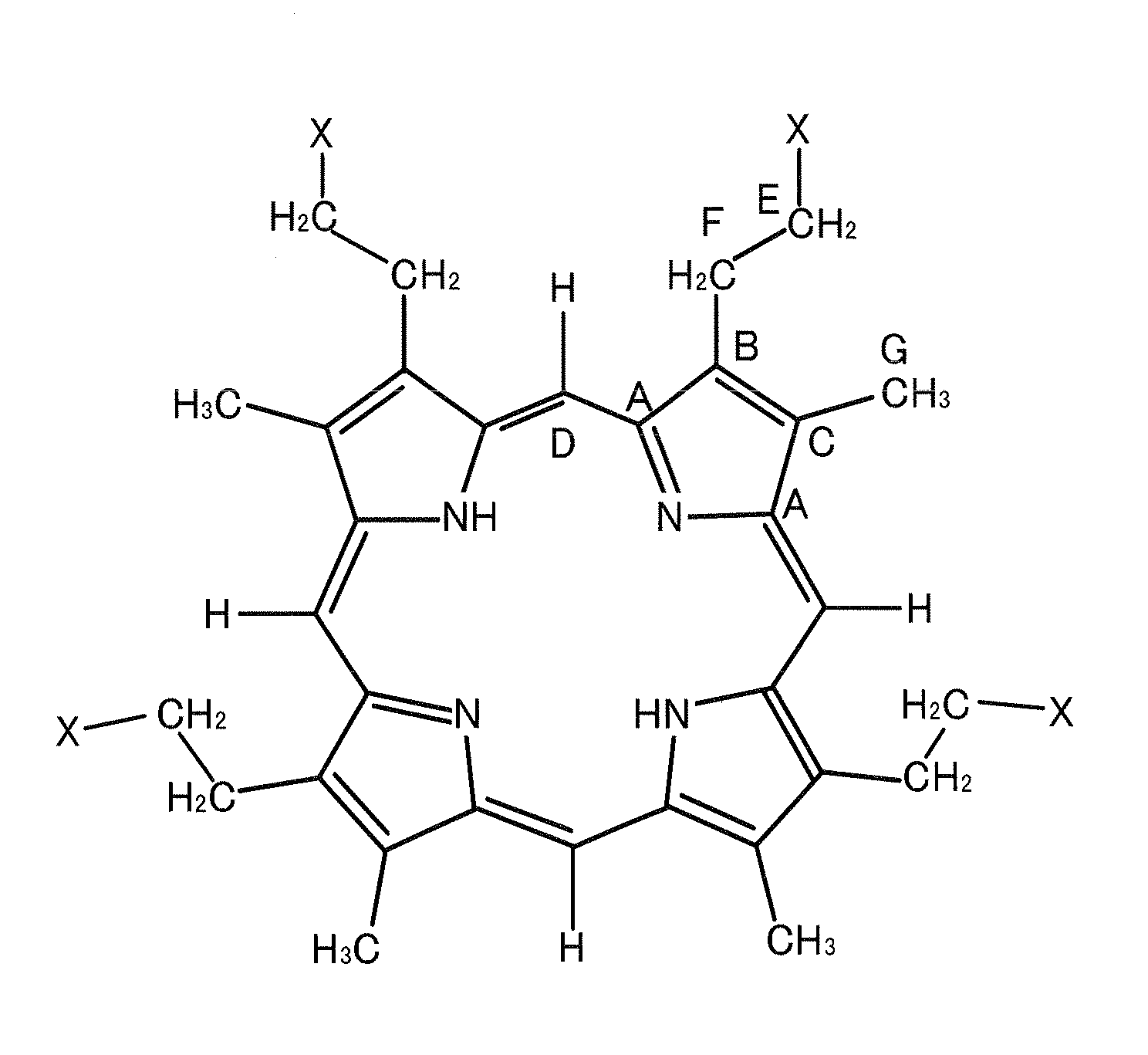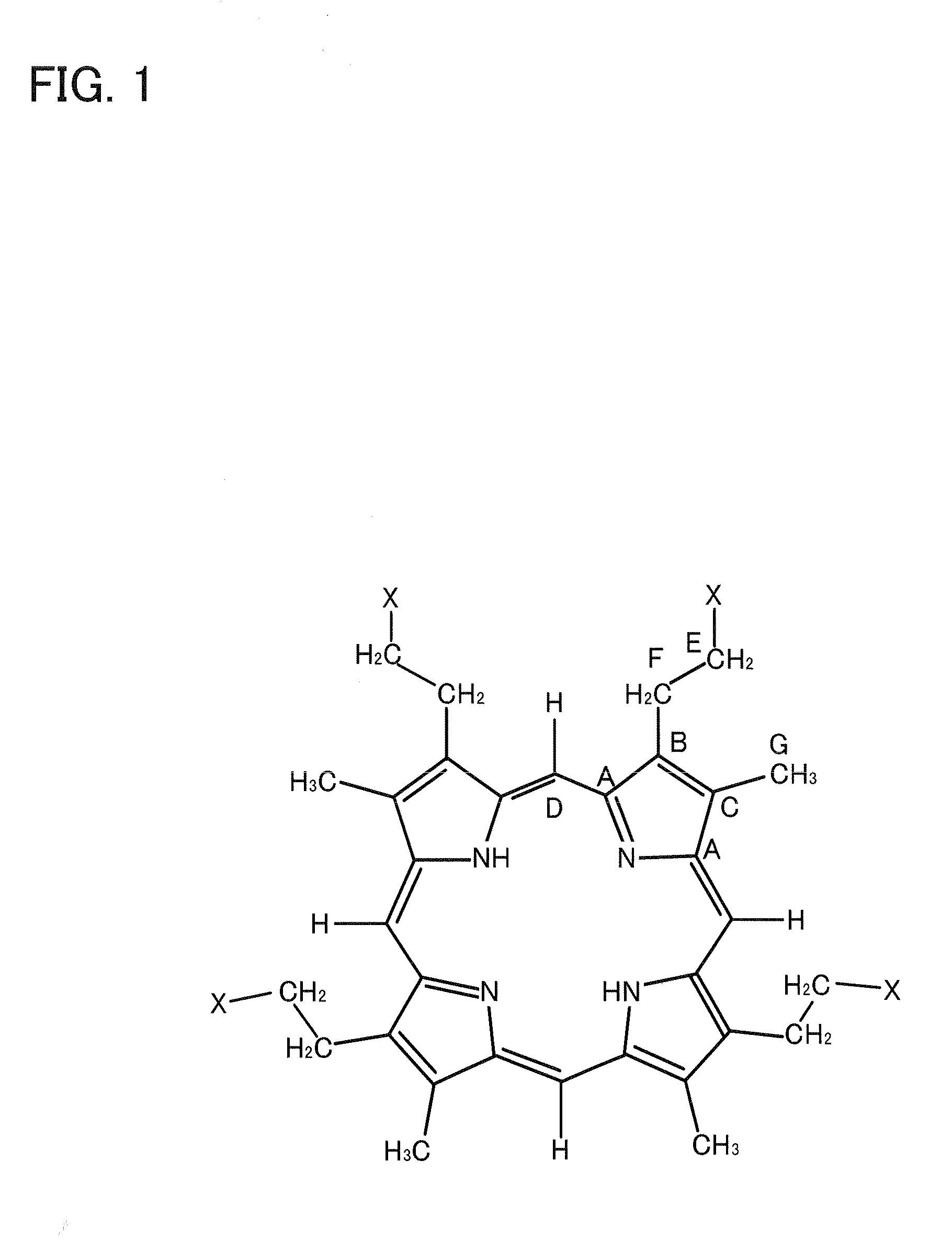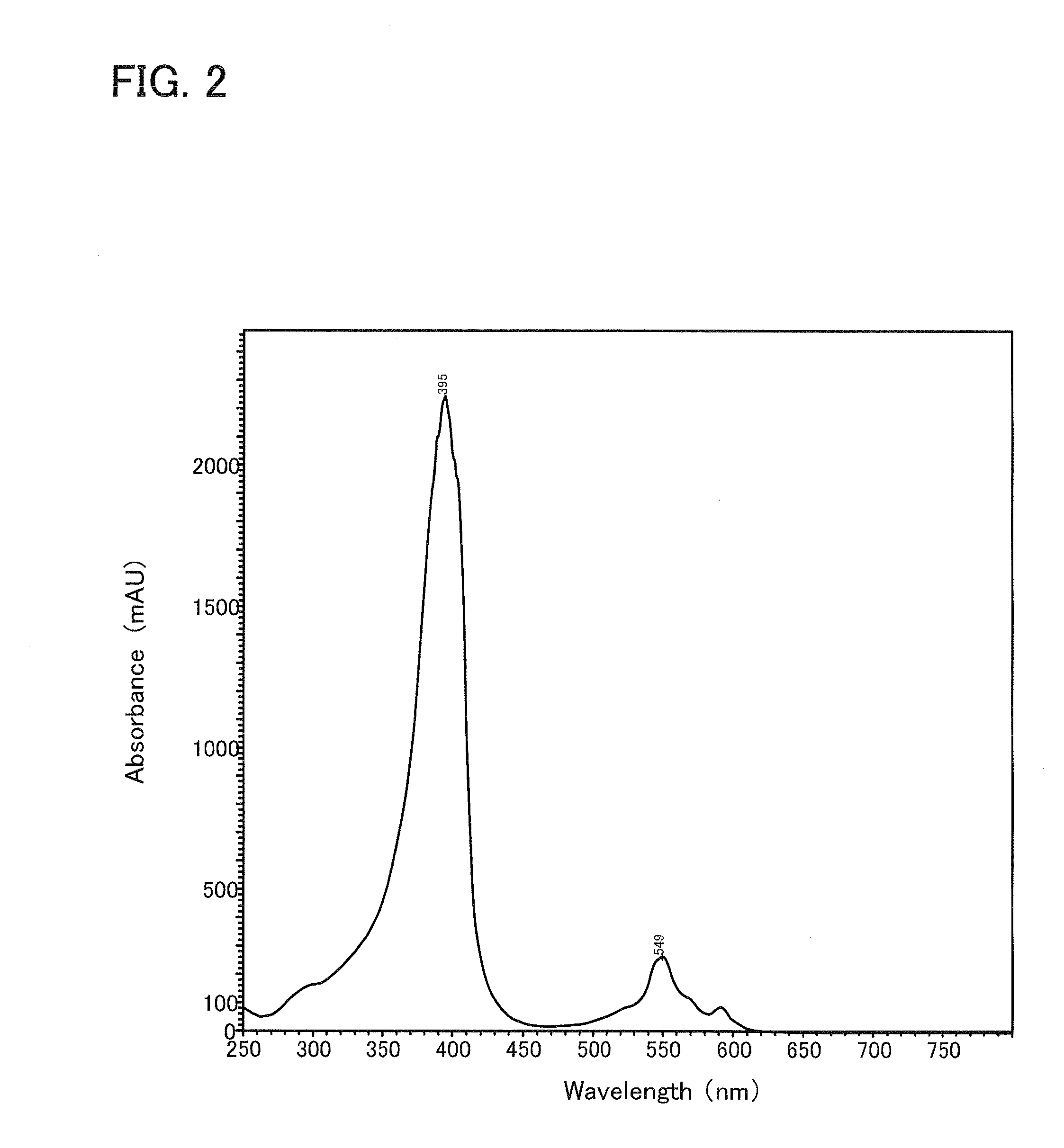Method for preparing tetrapyrrole compounds and tetrapyrrole compounds
a technology of tetrapyrrole and compound, which is applied in the field of preparation of tetrapyrrole compound and the resulting tetrapyrrole compound, can solve problems such as adverse effects on the environment, and achieve the effect of convenient provision of tetrapyrrole compound
- Summary
- Abstract
- Description
- Claims
- Application Information
AI Technical Summary
Benefits of technology
Problems solved by technology
Method used
Image
Examples
example 1
[0028]An insertion variant in which the transposon for the gene ypjD (b2611) had been inserted (JD23504 available from National Bio-Resources) were cultivated in 2 mL of LB culture medium (bacto-tryptone: 1%; bacto-yeast extract: 0.5%; NaCl: 0.5%) at 37° C. for 12 hours. There was added 1 mL of the resulting cell suspension to 500 mL of an aqueous solution prepared by adding 9 g of KH2PO4, 21 g of K2HPO4, 2 g of (NH4)2SO4, 1 g of citric acid dihydrate, 3.6 g of glucose and 200 mg of MgSO4 to 1 L of deionized water and the cells were subjected to principal cultivation at 37° C. for 24 hours.
[0029]The cultured liquid thus obtained was found to be colorless at the beginning of the principal cultivation, but the color thereof turned pink color after the elapse of 24 hours. This cultured liquid was treated using a centrifuge to thus precipitate the cells present therein and the resulting supernatant was filtered through a filter having a pore size of 0.22 μm. Then the resulting filtrate ...
example 2
[0071]Bacterial cells, more specifically Escherichia coli strains wherein the transposon for the gene ypjD (b2611) had been inserted into the gene of the strains (a transposon-inserted variant: JD23504, available from National Bio-Resources) were subjected to a preculture in 2 mL of LB culture medium (including Bacto-tryptone: 1%; Bacto-yeast extract: 0.5%; and NaCl: 0.5%) at a temperature of 37° C. over 12 hours. The resulting cell suspension (1 mL) was added to an aqueous solution obtained by dissolving, in one liter of deionized water, 20 mg of MnCl2, 1 g of citric acid dihydrate, 3.6 g of glucose, and 100 mg of MgSO4, and then the bacterial cells were subjected to the principal cultivation at a temperature of 37° C. over 24 hours.
[0072]The culture medium (culture solution) was found to be colorless at the initiation of the principal cultivation, but the culture medium turned reddish brown, after the elapse of 24 hours. The culture medium was subjected to a treatment in a centrif...
example 3
[0076]Bacterial cells, more specifically Escherichia coli strains wherein the transposon for the gene ypjD (b2611) had been inserted into the gene of the strains (a transposon-inserted variant: JD23504, available from National Bio-Resources) were subjected to a preculture in 2 mL of LB culture medium (including Bacto-tryptone: 1%; Bacto-yeast extract: 0.5%; and NaCl: 0.5%) at a temperature of 37° C. over 12 hours. The resulting cell suspension (1 mL) was added to an aqueous solution obtained by dissolving, in one liter of deionized water, 25 mg of sodium gold thiomalate, 1 g of citric acid dihydrate, 3.6 g of glucose, and 100 mg of MgSO4, and then the bacterial cells were subjected to the principal cultivation at a temperature of 37° C. over 24 hours.
[0077]The culture medium was found to be colorless at the beginning of the principal cultivation, but the culture medium turned yellow, after the elapse of 24 hours. The culture medium was subjected to a treatment in a centrifuge to thu...
PUM
 Login to View More
Login to View More Abstract
Description
Claims
Application Information
 Login to View More
Login to View More - R&D
- Intellectual Property
- Life Sciences
- Materials
- Tech Scout
- Unparalleled Data Quality
- Higher Quality Content
- 60% Fewer Hallucinations
Browse by: Latest US Patents, China's latest patents, Technical Efficacy Thesaurus, Application Domain, Technology Topic, Popular Technical Reports.
© 2025 PatSnap. All rights reserved.Legal|Privacy policy|Modern Slavery Act Transparency Statement|Sitemap|About US| Contact US: help@patsnap.com



